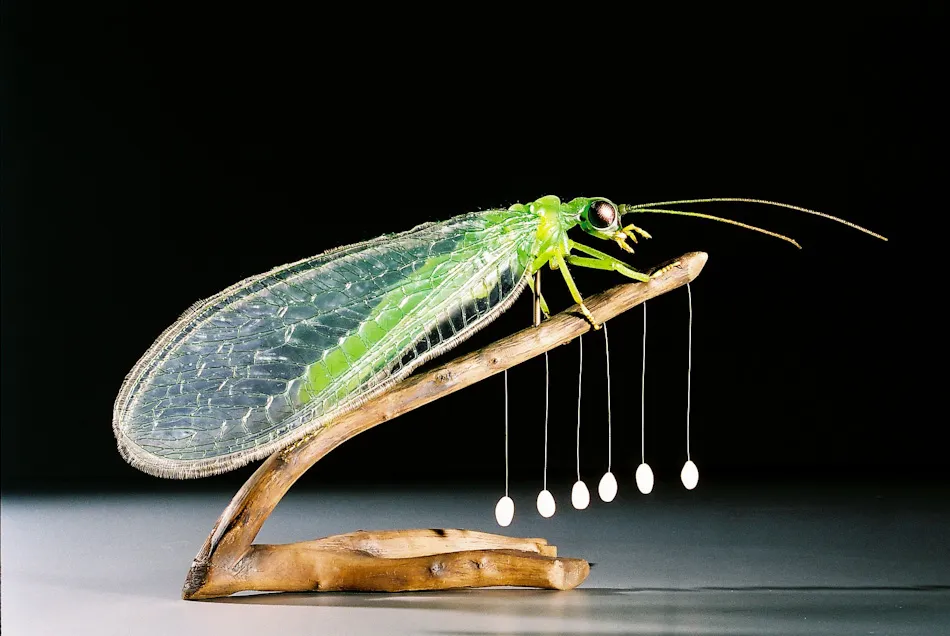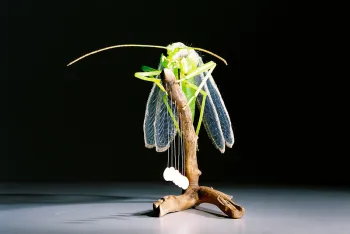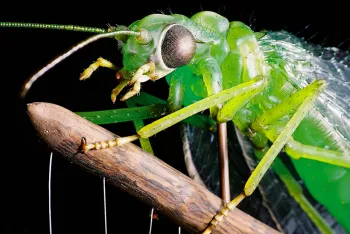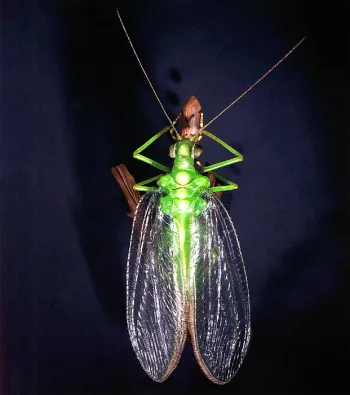Common green lacewing - Chrysoperla carnea
Distribution and habitat
The common green lacewing has a holarctic distribution and is by far the most common species of lacewing in central Europe.
It prefers low-lying vegetation and can be found wherever they can find suitable prey for their larvae.
Way of life and characteristic features
This delicate insect with a wingspan of 20 to 28 mm is called "golden-eyed" due to the metallic shine of its eye.
The larvae demolish copious quantities of aphids and other "harmful" insects. The common green lacewing is therefore successfully used in biological pest control.
The imagos overwinter in trees, caves and buildings and, due to the temperature and day length, their body colour changes in winter from green to reddish-brown and then back again to green in the spring.
The lacewing lays its eggs individually on a long stalk. The purpose of this is to protect the hatching eggs from natural enemies, as well as from each other (cannibalism).




